|
 Secure Site
Secure Site
|
 |
Archive for the 'yoga' Category
 awareness Sometimes the fastest way to speed things up is to slow down. Try this slow-motion hand meditation to clear your mind.
Recently, I made a list of things I wanted to accomplish. It was much too long and ambitious—but I geared up to move on all fronts anyway. After some exasperation at the slow headway I was making, I sat down with a wise friend for some counsel. “It sounds like you want to get a lot of things done,” he said.
“Absolutely,” I replied. “But I’m frustrated at this pace.”
After a long pause he replied, “If you really want to speed things up, you have to slow down first.” Much as I wasn’t ready for that bit of wisdom, once I tried slowing down, I realized he was right. By slowing down I became more relaxed and clear. I was able to trust my intuition and choose the best steps for the projects that truly resonated with my highest aspirations.
TAKE A BREAK
In our hyped-up and caffeinated culture, who doesn’t want to do more faster? But you may also crave a break from your overstimulated mind and aspire to a calmer, more intuitive, and present state. It’s easy to lose sight of your main purpose amid the distractions of a frenzied mind. Slowing down brings you back to the here and now.
Many meditation techniques use one point as an object of concentration. Whether it’s the breath, a mantra, sensations, the thought of love, or awareness itself, the object of concentration can be a doorway to the moment. But sometimes this single focus is too subtle for the mind to track easily. If that’s been your experience, you may find that slow-motion movement, which begins with attention to strong sensations in the body, to be a more tangible and satisfying focal point.
This process of gradually shifting your attention from the large movement of the asanas to the small movements of the breath is the essence of raja yoga. As you attend to the postures, you encounter and release deep-seated tensions. You also refine your awareness by concentrating on the subtlety of your breath and turning inward (pratyahara). From there you can move to increasingly subtler forms of mindfulness, from one-pointedness (dharana) to one-flowingness (dhyana) to absorption (samadhi).
A wonderful and accessible means of moving meditation involves concentrating on the slow movement of your hands. (See “Try Your Hand,” end of article.)
FEEL THE FORCE
Any meditation practice quickly reveals how your mind is habitually consumed by thoughts of the future or past. Moments of awareness in the present are comparatively few, but slow-motion movement, because it captures your mind’s attention, can draw you directly into experiencing the sensations of the present moment. This technique can pull your mind into one-pointed concentration forcefully, but it also has larger implications as you become more sensitive to the life force.
Many yogis believe that life force, or prana, runs your autonomic nervous system, animating your body and keeping all systems working at optimal levels. Usually, your mind submits to the healing presence of prana when you’re sleeping, which is why a good night’s sleep can be so restorative.
However, you can learn to tune in to prana when you’re awake and to build reserves of it.When you remove obstacles to free-flowing prana, you feel more alive and present in your life. Think of how great you feel after a yoga class or a night of dancing or making love. Movement can awaken both prana and awareness.
Slow-motion movement slows your mind. Just a few minutes of it before sitting is an excellent segue to a more subtle meditation practice. Try lifting your arms overhead and slowly releasing them to your sides, concentrating on the micro-movements of your hands as they flow through space. Just a minute of this helps you move into pratyahara, sense withdrawal.
Paying attention to slowing down helps you be mindful during the day. Try brushing your teeth or washing dishes more slowly and see how that brings your mind into the present. Slowing down a yoga pose also helps draw you into a dynamic flow of sensation, breath, and awareness.
A fascinating paradox emerges when you allow yourself to become absorbed in the small details of any physical action. Embracing movement, you are inexorably drawn to the stillness within.
adapted from Yoga Journal by Jonathan Foust
 Yoga Timers with gentle chimes Now & Zen
1638 Pearl Street
Boulder, CO 80302
(800) 779-6383
Posted in yoga, Yoga Timer, Yoga Timers by Now & Zen
 sleeping Side Sleeping
Benefits Helps keep spine aligned and reduces snoring.
Get into bed and turn to one side. Put a pillow between your knees and another under your head for support. Your head pillow should be just high enough to prevent your neck from side bending up or down; your whole spine should be straight when viewed from the side. Draw your bottom elbow and shoulder forward far enough so you do not lie directly on your arm. Optionally, place a third pillow in front of you and support one or both hands on it.
adapted from Yoga Journal byNora Isaacs
One of the ultimate Zen like experiences is waking-up from a great slumber refreshed and energized. Your mind and body are harmoniously one, both alert and focused. Having a refreshed mind and body are two keys to a natural and Zen lifestyle. Waking up in the morning should not be a loud and abrupt awakening, but rather it should be a peaceful positive experience. The right natural alarm clock can transition your deep and tranquil sleep into a serene start to consciousness. Imagine a long-resonating Tibetan bell-like chime waking you up to a beautiful morning experience.
The right alarm clock can be the most beneficial investment for you. With our Now & Zen natural alarm clock you are awakened more gradually and thus more naturally. Now & Zen is focused on creating a naturalistic lifestyle, and our clocks are an example of our philosophy.
 Gentle Wake Up Clock with Chime, Yoga and Meditation Timers Now & Zen – The Gradual Chime Clock Store
1638 Pearl Street
Boulder, CO 80302
(800 779-6383
Posted in Well-being, yoga, Yoga Timer, Yoga Timers by Now & Zen
 corpse yoga pose A harmonizing practice for people in recovery
As you practice the following sequence, remember to honor your limitations, going to your edge with love and acceptance rather than judgment and discouragement. If you are unable to move into a posture at this time, focus on breath-ing deeply as you think about the affirmation—that in itself is healing. At the end of the routine, take some time to write down your thoughts.
Benefits This basic pose of relaxation is done at the end of each hatha yoga session. It helps relieve the body of tension. It relaxes, rejuvenates, and replenishes the mind and body.
Affirmation I allow myself to relax completely and surrender to my Higher Power.
Lie on your back and gently close your eyes. Place your feet and legs slightly apart.
Place your arms along the sides of your body with your palms facing up. Make sure your teeth are slightly parted so that your jaw is relaxed. Start taking some deep breaths. Lie absolutely still. Close your eyes, take deep breaths, and let healing energy restore any areas of the body or mind that have been depleted by stress or tension. Visualize healing energy flowing through your entire body. Relax your body, quiet your mind, and soothe your soul. Set your Zen Timer for 20 minutes. Stay in this position until the Tibetan Bowl Gong Chimes on your Zen Timer.
adapted from Yoga Journal by Annalisa Cunningham, author of Healing Addiction with Yoga
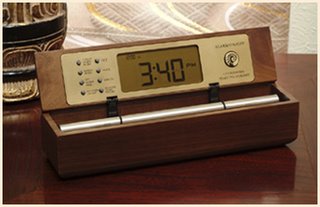 Walnut Wood Zen Timers with Chime for Yoga Now & Zen
1638 Pearl Street
Boulder, CO 80302
(800) 779-6383
Posted in yoga, Yoga Timer, Yoga Timers by Now & Zen
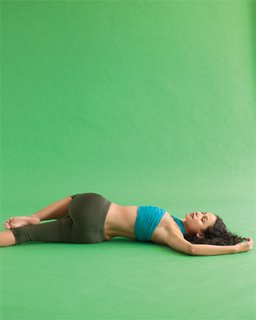 yoga A harmonizing practice for people in recovery
lwKnee-Hug Spinal Twist Jathara Parivartanasana
Benefits Releases the lower back and lengthens the spine. Increases flexibility of the spine, back, and ribs.
Affirmation Everywhere I turn I see beauty.
Lie on your back and hug your knees into your chest. Keep your knees bent into your chest and place your arms out to your sides. Your palms can be up or down, whichever feels most comfortable to you. Inhale. As you exhale, move your hips and knees to the left as you turn your head to the right. Hold the position and breathe. When you are ready, do a gentle spinal twist to the other side.
adapted from Yoga Journal by Annalisa Cunningham, author of Healing Addiction with Yoga
Posted in Chime Alarm Clocks, yoga, Yoga Timer, Yoga Timers by Now & Zen
 yoga practice A harmonizing practice for people in recovery
As you practice the following sequence, remember to honor your limitations, going to your edge with love and acceptance rather than judgment and discouragement. If you are unable to move into a posture at this time, focus on breath-ing deeply as you think about the affirmation—that in itself is healing. At the end of the routine, take some time to write down your thoughts.
Benefits Releases the lower back and lengthens the spine.
Affirmation I hold myself with compassion.
Lie on your back and bring your knees in toward your chest. Wrap your arms around your knees and legs, hugging them toward you. Keep your chin slightly tucked so your neck stays long on the floor.
Hold the position and breathe.
adapted from Yoga Journal by Annalisa Cunningham, author of Healing Addiction with Yoga
 Bamboo Zen Clocks and Chime Timers, a Natural Sound Alarm Clock Now & Zen
1638 Pearl Street
Boulder, CO 80302
(800) 779-6383
Posted in Chime Alarm Clocks, yoga, Yoga Timer, Yoga Timers by Now & Zen
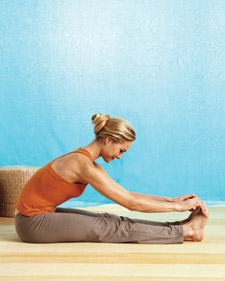 seated forward bend A harmonizing practice for people in recovery
As you practice the following sequence, remember to honor your limitations, going to your edge with love and acceptance rather than judgment and discouragement. If you are unable to move into a posture at this time, focus on breath-ing deeply as you think about the affirmation—that in itself is healing. At the end of the routine, take some time to write down your thoughts.
Benefits Helps stretch the hamstrings and lower back. It also fosters a sense of calm and letting go, while gently stretching the spine.
Affirmation I move forward with patience.
Sit on the floor with your legs extended in front of you. Sit up straight and rotate your ankles, flexing and stretching them. Keeping your feet flexed, inhale and lift your arms above your head. As you exhale, bend at the hips and lower your chest toward your knees. Keep your spine straight as you do this. Place your hands on your calves, ankles, or feet, wherever you can comfortably reach. Hold the pose for 10 breaths.
adapted from Yoga Journal, by Annalisa Cunningham, author of Healing Addiction with Yoga
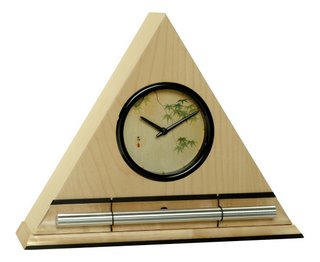 Zen Alarm Clock with Gentle Chime for Stress Reduction Now & Zen
1638 Pearl Street
Boulder, CO 80302
(800) 779-6383
Posted in Chime Alarm Clocks, mindfulness practice, Well-being, yoga, Yoga Timer, Yoga Timers by Now & Zen
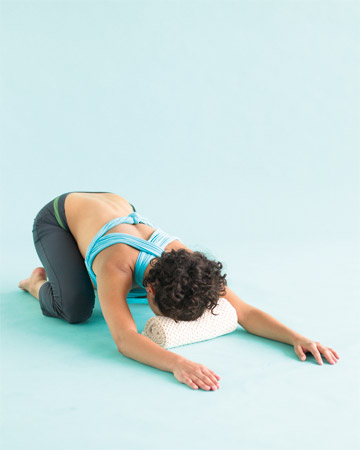 gentle yoga for people in recovery A harmonizing practice for people in recovery
As you practice the following sequence, remember to honor your limitations, going to your edge with love and acceptance rather than judgment and discouragement. If you are unable to move into a posture at this time, focus on breath-ing deeply as you think about the affirmation—that in itself is healing. At the end of the routine, take some time to write down your thoughts.
Benefits Releases tension in the shoulders and spine and relieves mental fatigue. Encourages feelings of safety and protection, as though you were in a womb of healing energy.
Affirmation I rest in trust and patience.
Begin in Sitting Mountain Pose, sitting on your feet with your toes touching and your heels separated. Inhale.
As you exhale, gently lower your head to the floor in front of your knees. Place your hands, palms up, next to your feet. Completely relax the neck and shoulders. Set your Zen Bowl/Gong Timer for 5 minutes. Hold this position while breathing for 5 minutes or as long as you are comfortable. Use pillows or bolsters for support under your torso or forehead if you have a tight lower back or stiff hips, knees, or ankles.
adapted from Yoga Journal by Annalisa Cunningham, author of Healing Addiction with Yoga
Use our unique “Zen Clock” which functions as a Yoga Timer. It features a long-resonating acoustic chime that brings your meditation or yoga session to a gradual close, preserving the environment of stillness while also acting as an effective time signal. Our Yoga Timer & Clock can be programmed to chime at the end of the meditation or yoga session or periodically throughout the session as a kind of sonic yantra. The beauty and functionality of the Zen Clock/Timer makes it a meditation tool that can actually help you “make time” for meditation in your life. Bring yourself back to balance.
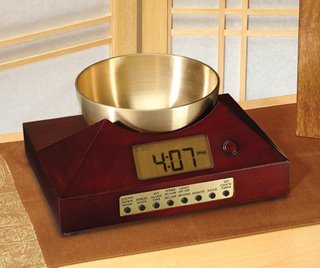 Gentle Tibetan Bowl Timer for Yoga, Meditation and a Gentle Alarm Clock Now & Zen – The Yoga Timer Store
1638 Pearl Street
Boulder, CO 80302
(800) 779-6383
Posted in yoga, Yoga Timer, Yoga Timers by Now & Zen
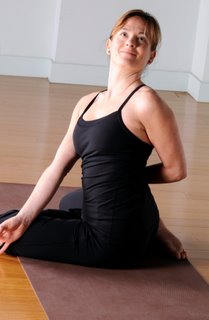 yoga There is one yogic breathing technique that can be practiced at all times of the day and night by just about anyone. This pranayama (breath control) is called ujjayi.
Ujjayi means “victorious.” The prefix ud means upward and superior, and jaya (from root ji) means to conquer and have victory over. With consistent practice of ujjayi breath, a practitioner will attain victorious results for both body and mind.
The benefits of ujjayi breath are manifold. In addition to aerating the lungs and removing excess phlegm, it boosts endurance and gently warms the body. This soothing breath massages and tones the entire nervous system, making it an excellent way to combat stress. It’s also believed to help counter high blood pressure.
While one should initially learn ujjayi breath in a seated position, in can later be consistently threaded through the entire asana practice.
Here’s how to practice:
1. Sit in a comfortable, upright meditation position (I encourage sitting on a folded blanket or pillow for extra support)
2. Maintaining a tall spine, close eyes and begin to breath normally through both nostrils. Observe the flow of the air in and out of the body.
3. Once you’re familiar with the course of the breath, take a deep, slow breath in through the nostrils. Try to focus the air in on the palate and back of the throat and create a sibilant sound (saaaa). It should be an ocean like sound, or like having your ear against a conch shell. Fill the lungs entirely and then…
4. Breath out slowly, focusing the air on the back of the throat/palate.
The sea-like sound is caused by a subtle constriction of the glottis, which is the aperture of the larynx.
The breath should be just loud enough that someone sitting close to you would hear it. Avoid being too loud of forceful. I’m fond of esteemed Ashtanga teacher Tim Miller’s description of ujjayi, “Imagine sipping the breath in through a straw. If the suction is too strong the straw collapses and great force is required to suck anything through it.”
5. Set your Zen Timer with Tibetan Bowl for 15 minutes. Continue to breathe for 5 to 15 minutes with this ocean like sound. If possible, take a brief savasana after.
More experienced practitioners, commit to carrying ujjayi breath through your entire asana practice. Let it be metronomic in quality.
Observe how much space you’ll discover in body and mind!
Sophie Herbert is an alignment focused yoga teacher (and perpetual student), a singer-songwriter, and a visual artist. She has lived, studied, and volunteered extensively in India; teaches yoga in Brooklyn and Manhattan; and recently released her first full-length album, “Take a Clear Look.” Please visit her website at SophieHerbert.com.
adapted from Wholeliving.com February 2011
Use our unique “Zen Clock” which functions as a Yoga Timer. It features a long-resonating acoustic chime that brings your meditation or yoga session to a gradual close, preserving the environment of stillness while also acting as an effective time signal. Our Yoga Timer & Clock can be programmed to chime at the end of the meditation or yoga session or periodically throughout the session as a kind of sonic yantra. The beauty and functionality of the Zen Clock/Timer makes it a meditation tool that can actually help you “make time” for meditation in your life. Bring yourself back to balance.
 The Zen Timer and Clock Store - Boulder, Colorado Now & Zen – The Zen Timer Store
1638 Pearl Street
Boulder, CO 80302
(800) 779-6383
Posted in Chime Alarm Clocks, yoga, Yoga Timer, Yoga Timers by Now & Zen, zen, Zen Alarm Clock, Zen Clocks and Dream Recall, Zen Timers
 Tree Pose One of the most recognizable yoga asanas, Vrksasana (Tree Pose) has been identified in Indian relics dating back to the seventh century. “A figure standing in a one-legged balance is part of a famous stone carving in the town of Mahabalipuram,” says Tias Little, the director of YogaSource in Santa Fe, New Mexico. In ancient times, he says, wandering holy men called sadhus would meditate in this posture for long periods of time as a practice of self-discipline.
In some traditions, the pose is called Bhagirathasana, to honor a great yogi king from India who—legend says—stood on one leg for a long time to appease the Hindu god Shiva and to be allowed to bring the sacred river Ganges from heaven to earth. “This posture represents the intense penance of Bhagiratha,” says Kausthub Desikachar, son and student of the yoga master T.K.V. Desikachar and chief executive of the Krishnamacharya Yoga Madiram in Chennai, India. “It’s supposed to motivate us to work toward our goal even if there are many obstacles in the way.” That doesn’t mean you have to stand on one leg for years. “The point is to make a dedicated effort to one’s practice,” he says. “It makes us strong, it enhances our willpower, and we achieve amazing benefits.”
This ancient, reliable pose is often the first balance posture you learn, since it’s relatively simple and strengthens your legs and spine and opens your thighs and hips. When you practice balancing poses, you learn some practical lessons in how to get grounded, find your center, stay focused, and steady your mind. Plus, the process—falling and trying again—helps develop patience and persistence, humility, and good humor.
Boost your balance
Learning to balance often has more to do with your mental state than your physical abilities. If you’re stressed, or if your mind is scattered, your body is likely to be unsteady, too. And, of course, the very practice of trying to balance is stressful. Most of us, as we try to balance, have unsettling thoughts like “I can’t do this” or “Everyone’s watching me wobble.”
Luckily, there are three tools you can use to quiet distracting mental chatter and steady your mind:
1. Be aware of your breath. Paying attention to your breath helps unite body and mind and establish a state of physiologic calm. As yoga master B.K.S. Iyengar writes in his classic guide, Light on Yoga, “regulate the breathing, and thereby control the mind.”
2. Direct your gaze. Also called drishti, a steady gaze helps focus your mind. In Vrksasana, anchoring your gaze on the horizon or a fixed point directs energy forward to keep you upright.
3. Visualize your tree. Imagine that you are a tree—with your feet rooted firmly in the earth and your head extending up toward the sun. Take a moment to meditate on what “tree” means to you and find an image that suits your body and temperament—a graceful willow, a solid oak, a flirty palm. Invite this mental picture to guide you toward stability.
Posted in yoga, Yoga Timer, Yoga Timers by Now & Zen
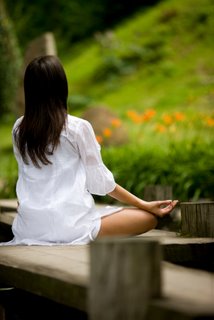 meditation Sitting in meditation can be challenging. You might feel anxious to get back to your busy day. Your mind wanders. Your foot falls asleep. But consider this: A regular meditation practice can make your brain work better.
Over the past few years, scientists have discovered that meditation helps the brain to process information more efficiently. One study, conducted at the University of Wisconsin-Madison, found that people who meditate capture information that others miss when presented with a series of visual cues in quick succession. The difference was most marked in longtime practitioners of vipassana meditation, but even novices who practiced just 20 minutes per day scored better than people who didn’t meditate.
Just as repeated practice of Sun Salutations builds strength and stamina, so regular meditation enhances the brain’s capacity for perception, awareness, and efficiency in processing, says Sat Bir Singh Khalsa, assistant professor of medicine at Brigham and Women’s Hospital, Harvard Medical School. “Meditation has both short- and long-term benefits to brain structure and function,” he says.
Another study, conducted through Massachusetts General Hospital, found that longtime meditators have a thicker insula, the part of the brain that links the emotional center with the thinking center. Some researchers say that this finding may explain a seeming paradox: In meditators, the amygdala, the part of the brain tied to the fight-or-flight impulse, is more active than in nonmeditators. But meditators also seem to be better able to calm that response than others.
“No one has proven why yet, but the theory is that meditators are more aware of what’s happening in their environment and better able to control their internal psychological and physiological responses to it,” says Khalsa.
adapted from Yoga Journal by Heather Boerner
Use our unique “Zen Clock” which functions as a Yoga & Meditation Timer. It features a long-resonating acoustic chime that brings your meditation or yoga session to a gradual close, preserving the environment of stillness while also acting as an effective time signal. Our Yoga Timer & Clock can be programmed to chime at the end of the meditation or yoga session or periodically throughout the session as a kind of sonic yantra. The beauty and functionality of the Zen Clock/Timer makes it a meditation tool that can actually help you “make time” for meditation in your life. Bring yourself back to balance.
 Meditation Timers and Chime Clocks Now & Zen – The Zen Meditation Timer Store
1638 Pearl Street
Boulder, CO 80302
(800) 779-6383
Posted in yoga, Yoga Timer, Yoga Timers by Now & Zen
« Previous Page — « Previous Entries
Next Entries » — Next Page »
|
|
|
|